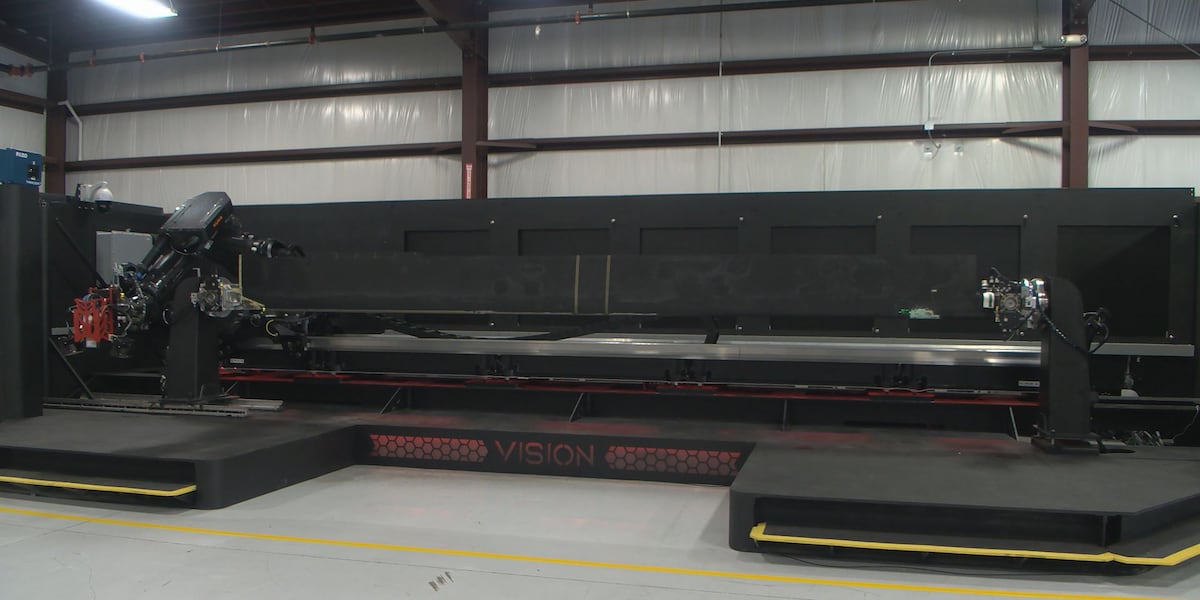GULFPORT, Miss. (WLOX) – Tuesday, the Mississippi Army National Guard (AVCRAD), in collaboration with the Aviation and Missile Command (AMCOM) and the National Institute for Aviation Research (NIAR) unveiled a new technology, marking a first in the country.
The ribbon cutting welcomed a new piece of hi-tech equipment that will be used to find voids in helicopter blades.
The new technology named “VISION” uses shearography, a non-destructive inspection technique with laser light to find the defects.
“It’s Verification and Inspection System Optimized for Nondestructive testing,” NIAR Automation Research Center Director Matt Tomblin explained. “It’s a long acronym but basically what that means is that we can take really any rotor blade structure we can put it in the cell behind us here, and it has cameras and various pieces of equipment to be able to inspect and almost see through rotor blade structures. So it’s kind of like an x-ray without all the radiation.”
Shearography, also known as speckle pattern shearing interferometry, uses coherent laser light in a similar manner to holographic interferometry to create a visual representation of a test object, for non-destructive testing (NDT), strain measurement, and vibration analysis.
It is widely used for aerospace applications as well as for wind turbine blades, the automotive industry and for materials research.
Over the years, AVCRAD, the unit that works on military aircraft, has used what’s called the tap method, where a professional taps down the blade using a small, specialized hammer to listen for voids.
The accuracy of the test depends on the tester’s knowledge and experience.
During the tapping of the blade, the technician listens for discontinuities in audible sounds produced as the hammer strikes the blade.
This discontinuity normally represents a void or delamination. However, CW2 Justin Henry says while the tap method is approved, “VISION” will eliminate all the guesswork.
“So timing-wise, it’s roughly the same as far as inspection, but the quality of inspection will improve tremendously over the tap method. Everything with us is safety-driven, right? There’s going to be an aircrew strapped to this aircraft that’s got these four main rotor blades,” Henry said. “Any type of damage that we don’t find, or slips through the cracks if you will. You know you’ve got their lives in your hands at that point
AVCRAD will combine the tap test along with the new technology to collect data to validate current methods and improve shared knowledge.
Henry says in the future they hope for “VISION” to improve from just an inspection method to being able to make the repairs as well.
Tomblin says they hope to have “VISION” fully validated for use by July 2025.
The Mississippi AVCRAD supports 24 Army Aviation Support Facilities in two South Eastern states including Puerto Rico and the Virgin Islands.
Photojournalist: Hunter Ezelle
See a spelling or grammar error in this story? Report it to our team HERE.
Copyright 2024 WLOX. All rights reserved.
